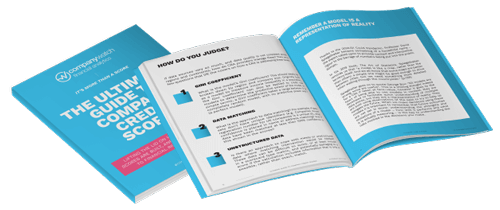5 Main Types of Financial Risk to Look Out For

Financial risk is an inherent part of any financial activity. The idea is to be prepared in the event of a risk becoming a reality. Currently, 72% of UK business decision makers feel that they are not doing enough to protect their company from financial risk. To that end, 86% of decision makers agree that managing financial risk must be the top priority, especially given the uncertain and volatile socio-economic climate of today.
Company Watch has helped hundreds of UK businesses manage their financial risk by providing valuable insights into company health, financial performance, and potential risks.
The best way to create an effective risk management framework is to first understand what the most salient risks to look out for are. In this blogpost, we cover:
- What is financial risk management?
- 5 main types of financial risks to look out for
- Conducting a financial risk assessment
What is financial risk management?
Financial risk management is the process of identifying, assessing, and mitigating potential financial losses. It involves a comprehensive analysis of various risk factors - the main ones are listed below.
Credit risk analysis is a critical component of financial risk management. It involves evaluating the likelihood that a borrower will default on their debt obligations.
By effectively managing financial risks, businesses and individuals can protect their financial stability, enhance their decision-making, and improve their overall resilience.
5 main types of financial risk to look out for
1. Market risk
Fluctuations in market prices such as interest rates and exchange rates can significantly impact financial performance. For instance, a sudden increase in interest rates can increase borrowing costs for businesses. This can, in turn, affect their profitability and cash flow.
In August 2024, more than a quarter of UK businesses reported a decrease in turnover, compared to August 2023. At the same time, market risk in most industries has increased on average by 15% over the last 4 years. Evidently, the correlation between market risk and business turnover appears to be high.
2. Credit risk
Credit risk refers to the risk of a borrower defaulting on their debt obligations, leading to significant financial losses for the lender. This is why credit risk analysis is such a critical component of risk management. It enables you to determine the likelihood of a borrower making good on their payments. A company that extends credit to customers without conducting proper due diligence faces an increased credit risk.
2. Liquidity risk
Liquidity risk occurs when a business is unable to meet short-term financial obligations because of insufficient cash or liquid assets. This can lead to financial insecurity and may also halt operations. According to a report by the Economic Observatory, 1 in 12 UK SMEs hold no spare cash and face a massive liquidity crisis.
The best way to guard against liquidity risk is for businesses to conduct regular due diligence checks on new customers and suppliers. Doing this will ensure that any red flags are highlighted well in advance. Company Watch allows you to conduct enhanced due diligence and generate EDD reports that demonstrate your customers’ or suppliers’ financial health in an easily explainable manner.
3. Operational risk
Operational risk arises when internal company processes are failing or inadequate, or when a human error occurs, leading to financial losses for the business. Robust risk management procedures can help mitigate operational risk by flagging early warning signs.
4. Reputational risk
Any kind of damage to a company’s reputation that can then lead to significant financial losses is a reputational risk. Building a strong reputation can come from many things - product quality, nature of partnerships, and ethical standards to name a few. The key to maintaining your reputation in the industry is to know exactly what values your target audience holds. Protecting those values will help you protect your reputation.
Conducting a financial risk assessment
Now you know what type of financial risks are salient in 2024, the next step is to conduct a comprehensive risk assessment. By evaluating potential risks, businesses can develop strategies to mitigate them and protect their financial health.
Below is a risk assessment template that can provide a framework for conducting this analysis. Key risk assessment steps include:
- Identifying potential risks: Use the list in the previous section to determine which of the financial risks listed above are most relevant to your business. Consider both external and internal factors that may deteriorate your financial health.
- Assessing the likelihood and impact of each risk
- Prioritising risks from most to least dangerous
- Developing risk mitigation strategies
- Continuously monitoring and reviewing the initial risk assessment
Company Watch is a valuable tool in conducting risk assessments. Its comprehensive database and analysis capabilities can help you identify potential risks, assess their likelihood and impact, and develop effective mitigation strategies. By leveraging Company Watch's resources, you can enhance your risk management practices and make more informed decisions to protect your business.
Read our blogpost on how to manage financial risk to learn more about risk management frameworks.
Key takeaways
- Financial risk management is the process of identifying, assessing, and mitigating potential financial losses.
- The 5 main types of financial risks to look out for are - market risk, credit risk, liquidity risk, operational risk, and reputational risk.
- The key risk assessment steps are - identifying potential risks, assessing the likelihood and impact of each risk, prioritising risks, developing a risk assessment framework, and ongoing monitoring.

